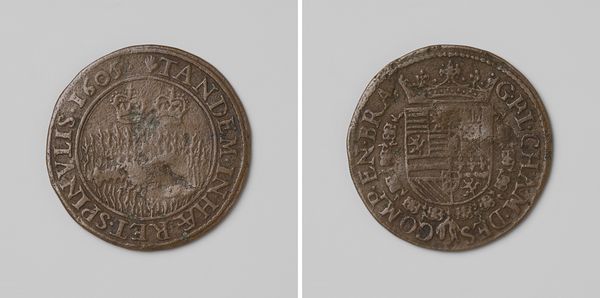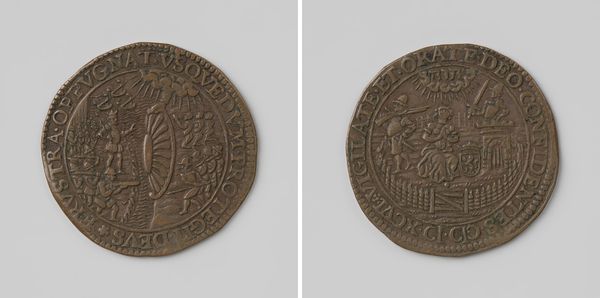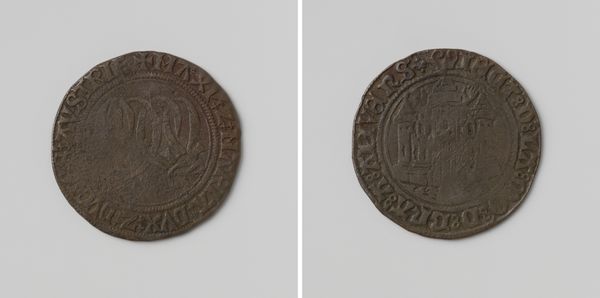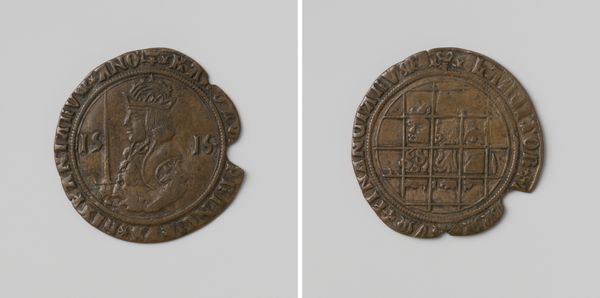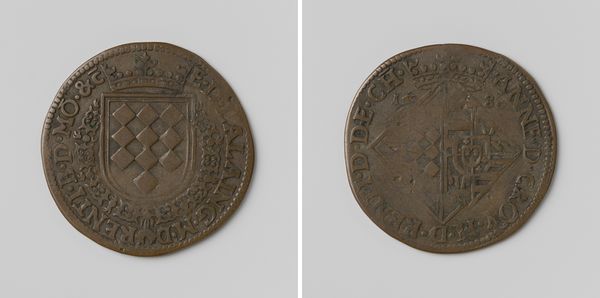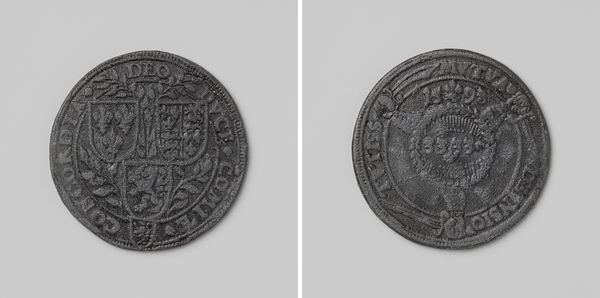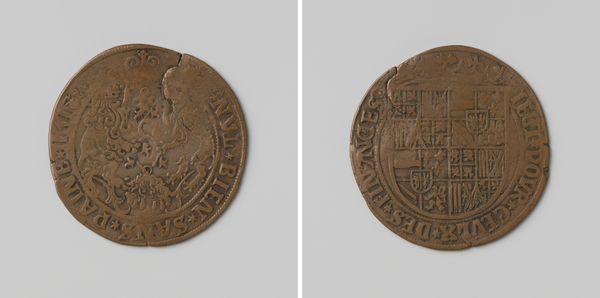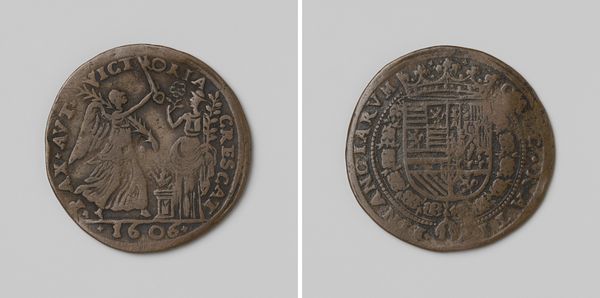
Maria van Hongarije, landvoogdes der Nederlanden, rekenpenning van de raad van Financiën 1540 - 1544
0:00
0:00
carving, metal, relief, sculpture, engraving
#
portrait
#
decorative element
#
carving
#
metal
#
relief
#
sculptural image
#
11_renaissance
#
sculpture
#
carved
#
engraving
#
miniature
Dimensions: diameter 2.9 cm, weight 3.77 gr
Copyright: Rijks Museum: Open Domain
Curator: We’re looking at a Renaissance-era calculating token, dating roughly between 1540 and 1544. It represents Maria of Hungary, governor of the Netherlands. Editor: My first impression is of something rather stern. The object feels compact, weighty… I can imagine it feeling quite cold to the touch. Curator: Cold but deliberately designed. Consider how the incised lines form the inscriptions; the relief allows them to literally stand out. Note also the balanced arrangement of lettering and heraldic devices—every element serves to articulate power and status. Editor: Absolutely. That double-headed eagle immediately signifies imperial authority, doesn’t it? A very deliberate choice. This imagery carries so much cultural baggage – invoking not just the Habsburg dynasty, but centuries of European power dynamics. And then, that interwoven "AA" on the other side – I imagine that represents a personal symbol? Curator: Indeed. It functions as a complex monogram, perhaps hinting at a personal motto or virtue cherished by Maria. It certainly isn't mere decoration, though it's hard to deny it carries a decorative flair. The cross-like shapes of the ‘A’s could subtly allude to her devout nature as well. The placement within the encircling inscription seems crucial for contextualizing her position. Editor: Fascinating. Beyond just pure heraldry, these symbols work on a more subliminal level, creating an aura around Maria. We’re not just seeing her office, but arguably also how she wished to be seen. A shrewd politician keenly aware of image-making. Curator: Yes, it speaks to an astute application of iconography, reflecting Maria’s understanding of governance. But at its core, this remains a study in contrasting lines, textures, and circular forms. The deliberate contrasts establish an aesthetic order reflective of the social order. Editor: Thinking about that now, this piece embodies an intersection of artistic intention and social commentary, allowing us to see past rigid formalism. Curator: Precisely. The tension created between function and symbolism adds greater depth to this seemingly utilitarian item.
Comments
No comments
Be the first to comment and join the conversation on the ultimate creative platform.
